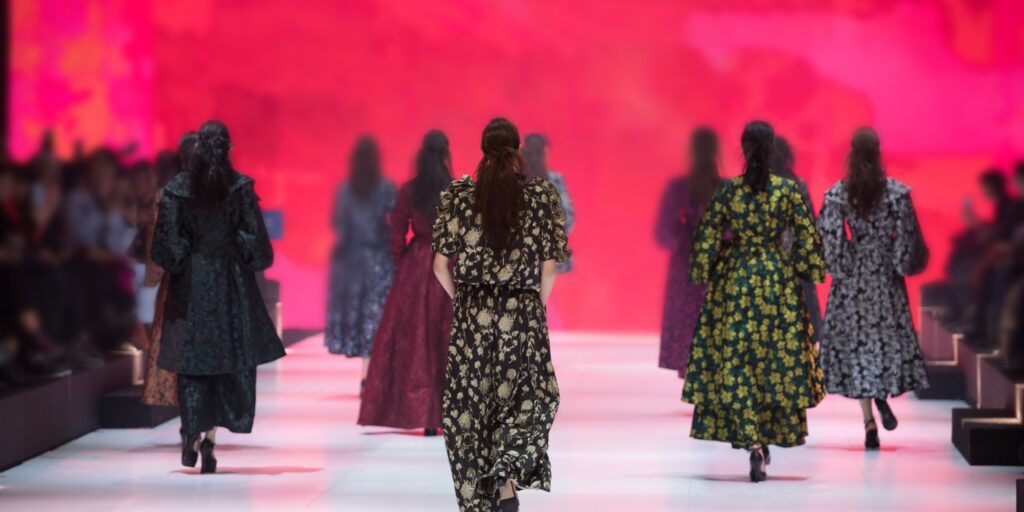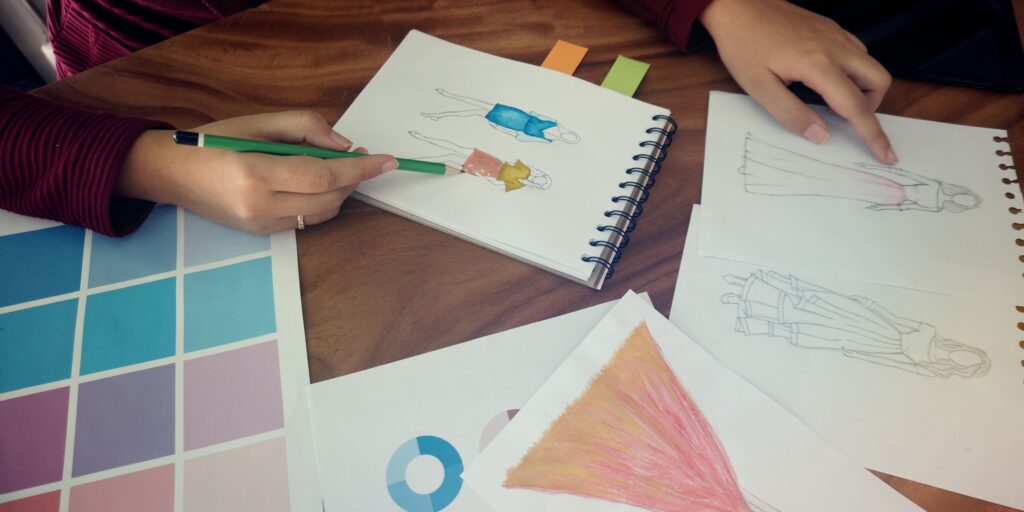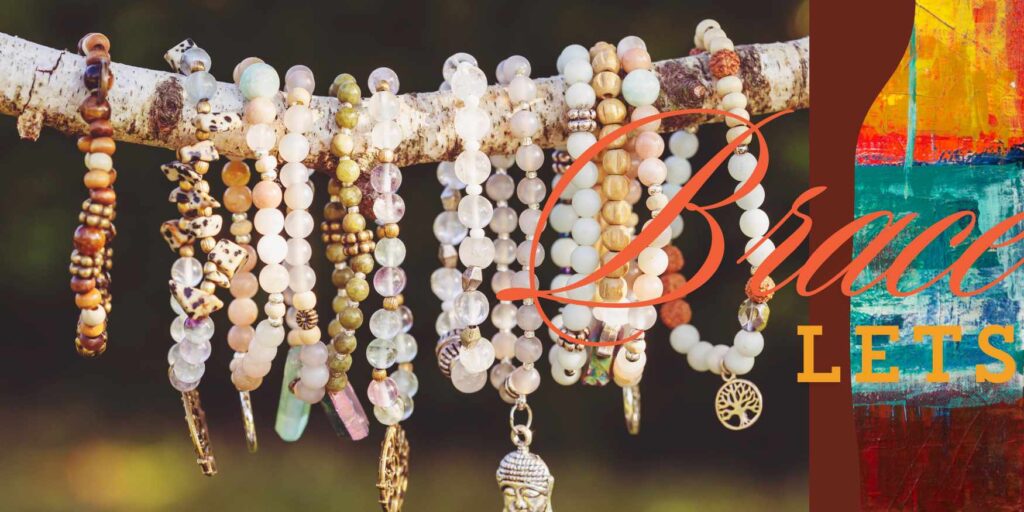
Introduction
The fashion industry is a captivating world, filled with creativity, innovation, and an ever-changing array of trends. It’s a realm where art meets commerce, where imagination collides with practicality, and where passion fuels profession. If you’re driven by a love for aesthetics and an interest in the cultural significance of apparel, entering the fashion industry might be your calling. However, breaking into the world of fashion is no easy feat. It requires more than just a keen eye for style — you’ll need a strong foundation of knowledge, a diverse set of skills, and a steadfast determination to navigate this competitive field. In this comprehensive guide, we’ll explore the various aspects of how to get into fashion, providing you with the information and insights needed to kickstart your journey.
Understanding the Basics of Fashion

Before you can make your mark in the fashion world, it’s crucial to understand its fundamentals. This includes an appreciation for fashion history, a grasp of fashion terminology, and an understanding of the basic principles of fashion design.
History of Fashion
Fashion is not just about the latest trends; it’s a reflection of society’s cultural, political, and economic shifts throughout history. Knowledge of significant periods in fashion history can provide context for current trends and inspire future designs. For instance, the Roaring Twenties brought about flapper dresses that symbolized women’s newfound freedom, while the 1960s Mod era highlighted youth culture and the desire for individuality.
Fun Fact: Did you know that Coco Chanel, one of the most influential fashion designers of the 20th century, popularized the ‘little black dress’ in the 1920s? It was considered a versatile and accessible piece that every woman should have in her wardrobe.
Fashion Terminology
Understanding fashion terminology is like learning a new language, and it’s essential for effective communication in the industry. Terms like silhouette (the shape or outline of a garment), haute couture (high-end custom-made clothing), and prêt-à-porter (ready-to-wear) are commonly used in fashion discourse.
Common Fashion Terms
| Term | Definition |
| Silhouette | The shape or outline of a garment |
| Haute Couture | High-end custom-made clothing |
| Prêt-à-Porter | Ready-to-wear |
Basic Principles of Fashion Design

The principles of fashion design are foundational elements that guide the creation of garments and outfits. These include:
- Color: Understanding color theory can help you create visually harmonious designs.
- Texture: This refers to how the surface of a material feels and looks. It can add depth and interest to a design.
- Shape and Form: This involves the physical structure of a garment and how it conforms to the body.
By mastering these fundamentals, you’ll be well-equipped to embark on your journey into the fashion industry.
- Career Paths in the Fashion Industry
- The fashion industry is a vast field with a myriad of career paths. Here, we’ll discuss three significant roles: fashion design, fashion buying, and fashion journalism. These roles showcase the diversity in the fashion industry, from creating and curating to reporting on the latest trends.
- Fashion Design
- Fashion design is often the first career that comes to mind when thinking about the fashion industry. It involves creating original clothing, footwear, and accessories. Designers are responsible for every step in the process, from initial concept and sketch to overseeing production.
- Case Study: Consider Alexander McQueen, a British designer known for his innovative and unconventional designs. He started as an apprentice on Savile Row, a street in London famous for its bespoke tailoring, and eventually became one of the most celebrated designers in the world.
- To become a fashion designer, you need to have a combination of drawing skills, a keen eye for color and texture, an ability to visualize concepts in three dimensions, and a deep understanding of fabrics and techniques.
- Fashion Buying
- Fashion buyers play a critical role in the retail side of the fashion industry. They are responsible for selecting a range of products to sell in stores. This involves analyzing consumer trends, predicting what will sell, and negotiating with suppliers to ensure profitability.
- A successful fashion buyer must be analytical, decisive, and willing to take risks. They also need excellent negotiation skills and a thorough understanding of their target market’s preferences.
- Fashion Journalism
- Fashion journalism involves reporting on the latest fashion trends, industry news, and cultural implications of fashion. Fashion journalists may work for magazines, newspapers, websites, or television channels.
- This career path requires a flair for writing, a passion for fashion, and a knack for storytelling. It’s also essential to stay updated with industry trends and have a broad understanding of fashion history and movements.
- Each of these career paths offers a different perspective on the fashion industry. Depending on your interests and skills, you might find one more appealing than the others.
Education for a Career in Fashion

While talent and creativity are crucial in the fashion industry, formal education can provide you with a structured understanding of the field and equip you with necessary technical skills. Here, we’ll explore different educational paths you could consider.
Fashion Design Degrees
A degree in fashion design offers comprehensive training in various aspects of the fashion industry, from sketching and pattern-making to textiles and production processes. These programs typically cover both the artistic and technical sides of fashion design, preparing students for a range of roles within the industry.
Fashion Merchandising or Business Degrees
For those interested in the business side of fashion, such as buying or brand management, a degree in fashion merchandising or fashion business may be more appropriate. These programs focus on retail management, marketing strategies, and financial principles specific to the fashion industry.
Journalism or Communication Degrees
If you’re passionate about writing and reporting on fashion trends and industry news, consider pursuing a degree in journalism or communication. While not fashion-specific, these programs will teach you the fundamentals of effective reporting and writing, which you can then apply to the fashion context.
Educational Paths in Fashion
| Path | Ideal For | Description |
| Fashion Design Degree | Aspiring designers | Comprehensive training in both the artistic and technical aspects of fashion design. |
| Fashion Merchandising or Business Degree | Those interested in the business side of fashion | Focuses on retail management, marketing strategies, and financial principles in the fashion industry. |
| Journalism or Communication Degree | Aspiring fashion journalists or editors | Teaches the fundamentals of reporting and writing, which can be applied to the fashion context. |
Remember, while formal education can be beneficial, it’s not the only route into the fashion industry. Many successful fashion professionals have paved their own way through internships, apprenticeships, or self-teaching.
Building a Portfolio and Gaining Experience
Whether you’re a fashion designer, buyer, or journalist, building a strong portfolio and gaining practical experience is crucial for your career growth. Here’s how you can do it.
Portfolio
A portfolio showcases your talent, skills, and vision. It’s a collection of your best work, demonstrating your creativity and technical proficiency. Here’s what to include:
- Sketches and Designs: Include sketches or photos of your designs, showcasing a broad range of styles and techniques.
- Fashion Collections: If you’ve created a clothing line or collection, highlight these pieces in your portfolio.
- Mood Boards: These show your ability to conceptualize a theme or trend and plan a cohesive collection.
- Technical Drawings: These demonstrate your understanding of garment construction and detailing.
Remember, quality over quantity. Choose pieces that best represent your style and skill set.
Gaining Experience

Practical experience provides a real-world understanding of the industry and helps you establish professional connections. Here’s how you can gain experience:
- Internships: Interning at a fashion company can give you hands-on experience and insights into the day-to-day workings of the industry.
- Freelance Work: Taking on freelance projects can help you build your portfolio while earning income.
- Volunteer: Volunteering for fashion events or shows can provide networking opportunities and add valuable experience to your resume.
- Networking: Attend industry events, join online fashion communities, and connect with professionals in the field. Networking can open doors to job opportunities and collaborations.
Building a portfolio and gaining experience are essential steps in launching a successful career in fashion. It allows you to showcase your skills, learn from practical experience, and make valuable industry connections.
Networking in the Fashion Industry

- In the fast-paced, highly competitive world of fashion, networking plays a crucial role. It can open doors to new opportunities, provide valuable industry insights, and help you establish strong professional relationships. In this section, we’ll explore the importance of networking in the fashion industry and share some tips on how to network effectively.
- The Role of Networking in Fashion
- Networking is more than just exchanging business cards at industry events. It’s about building meaningful connections with professionals in the field, from designers and buyers to journalists and photographers. Here’s why networking is essential:
- Career Opportunities: Many job openings in the fashion industry are filled through word-of-mouth or referrals. Networking can help you learn about these opportunities before they’re widely advertised.
- Industry Knowledge: Conversations with industry insiders can provide insights into the latest trends, upcoming brands, and shifts in consumer behavior that you might not find elsewhere.
- Collaborations: Networking can lead to collaborations with other professionals, helping you broaden your skills and portfolio.
- Mentorship: Building relationships with experienced professionals can provide mentorship opportunities, offering guidance as you navigate your career.
- Tips on How to Network Effectively
- Networking can seem daunting, especially if you’re just starting out. But with the right approach, it can be a rewarding experience. Here are some tips:
- Be Authentic: Genuine interest and curiosity about others’ work can go a long way in forming meaningful connections. Avoid hard-selling yourself; instead, focus on building relationships.
- Attend Industry Events: Fashion shows, trade fairs, and conferences are great places to meet industry professionals. Make sure to follow up after the event to keep the conversation going.
- Leverage Social Media: Platforms like LinkedIn, Instagram, and Twitter can be effective tools for connecting with fashion professionals around the world. Share your work, comment on others’ posts, and join fashion groups to engage in discussions.
- Volunteer or Intern: Offering your time at fashion events or companies can provide networking opportunities while giving you hands-on industry experience.
- Keep in Touch: Networking is not a one-time activity. Keep in touch with your contacts, even when you don’t need anything. Send them articles they might find interesting, congratulate them on their achievements, and reach out occasionally to catch up.
- Remember, networking is a two-way street. While it’s about advancing your career, it’s also about helping others. By offering support and value to your contacts, you’ll build stronger, more beneficial relationships.
- Whether you’re a budding designer or an established fashion professional, effective networking can significantly impact your career in the fashion industry. It’s a skill that, when honed, can lead to exciting opportunities and lasting professional relationships.
Staying Updated and Adapting to Trends

In the dynamic world of fashion, keeping up with the latest trends and adapting to them is crucial for anyone involved in the industry. Whether you’re a designer, a retailer, or a fashion enthusiast, staying current can give you a competitive edge, inform your decisions, and enhance your creativity.
Importance of Keeping Up with Fashion Trends
Fashion trends are a reflection of the times we live in, influencing and being influenced by social, political, and cultural dynamics. They play several important roles:
- Staying Relevant: Fashion trends help you stay relevant and informed about the industry’s direction. It allows you to anticipate what customers will want, which is key to maintaining sales.
- First Impressions: Your fashion choices can make a powerful first impression, professionally and socially.By following trends, you project an image of being contemporary and aware.
- Inspiration and Creativity: Trends often serve as a source of inspiration, sparking new ideas and pushing the boundaries of design.
- Cultural Connection: Fashion trends often keep historical and cultural traditions alive, allowing us to express our identity and beliefs.
- Economic Impact: Our fashion choices influence market trends, drive demand for products and services, contributing to economic prosperity.
However, it’s important to balance trend-following with sustainability concerns. Fast fashion practices often involve non-sustainable and unethical labor practices.
Reliable Sources for Fashion News and Trends

Staying updated requires reliable sources of information. Here are some places where you can find the latest fashion news and trends:
- Fashion Magazines: Traditional print magazines like Vogue, Elle, and Harper’s Bazaar provide in-depth trend reports, designer profiles, and fashion editorials.
- Online Publications: Websites like Fashionista, Business of Fashion, and WWD offer up-to-date news, trend analysis, and industry insights.
- Fashion Weeks: These biannual events in New York, London, Milan, and Paris showcase the latest collections from top designers, setting the trends for the upcoming season.
- Social Media: Platforms like Instagram and Pinterest are great for visual inspiration, while Twitter can keep you updated on real-time fashion news. Influencers often play a big role in promoting and creating trends.
- Trade Shows & Fairs: These events provide insights into upcoming trends, particularly in specific sectors like textiles or accessories
Remember, while it’s important to be aware of trends, they should not dictate your entire style or design process. True fashion innovation often comes from those who dare to break the mold and chart their own path.
conclusion
- In conclusion, breaking into the fashion industry is a journey that requires passion, dedication, and a continuous desire to learn and adapt. From understanding the fundamentals of design to creating your unique style and networking, every step molds your path in this vibrant field. Remember, your individuality is your greatest asset in this creative world. Embrace challenges as they come, for they are opportunities for growth and exploration. As you embark on this exciting journey, remember that every success story in fashion started where you are today. So, go forth, let your creativity shine, and welcome to the thrilling world of fashion.
Frequently Asked Questions
1. What skills do I need to get into the fashion industry?
To break into the fashion industry, you’ll need a combination of creative and practical skills. These include a keen eye for detail, understanding of color theory, drawing abilities, proficiency in design software, and knowledge of textiles. Business skills like marketing, networking, and trend forecasting are also invaluable.
2. Do I need a degree to work in fashion?
While a degree in fashion design or a related field can be beneficial and provide you with theoretical knowledge and practical skills, it is not a strict requirement. Many successful fashion professionals have started their careers without formal education but through internships, apprenticeships, or starting their own labels.
3. How can I network in the fashion industry?
Networking in the fashion industry can be done through attending fashion events, joining online fashion communities, and reaching out to industry professionals on social media platforms like LinkedIn and Instagram. Internships or work placements can also provide valuable networking opportunities.
4. How important is a portfolio in getting into fashion?
A portfolio is crucial as it showcases your creativity, skills, and style to potential employers or clients. It should include your best work, demonstrate your ability to work with different materials and styles, and reflect your unique aesthetic.
5. Can I start a career in fashion at any age?
Absolutely! The fashion industry values creativity and innovation, regardless of age. Whether you’re just out of school or looking for a mid-life career change, it’s never too late to pursue your passion for fashion.
6. How do I keep up with fashion trends?
You can keep up with fashion trends by following fashion shows, reading fashion magazines, subscribing to fashion blogs, and following designers and fashion influencers on social media. However, while it’s important to know the trends, remember that your unique style is what sets you apart.
7. Is it hard to break into the fashion industry?
While the fashion industry is competitive, with hard work, passion, and persistence, you can certainly carve a niche for yourself. Gaining practical experience through internships, continuously honing your skills, networking effectively, and staying updated with the latest trends are key to breaking into the industry.

Choosing the Perfect Fashion Bracelets for Women




